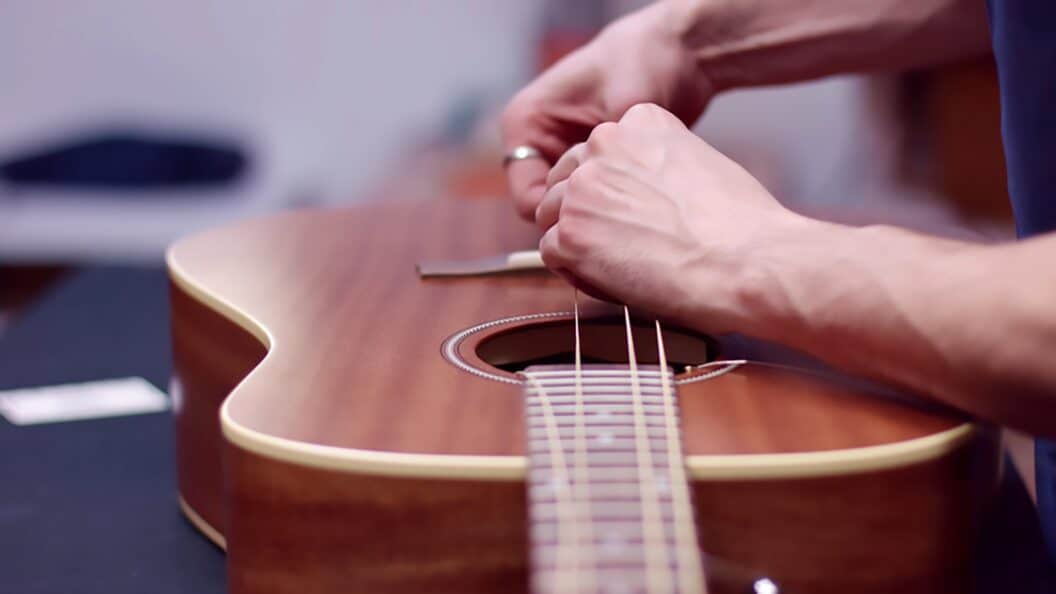The guitar saddles are one of the most important components of the guitar, that directly influences the playability and sound of the guitar. It is a small piece made of materials like bone, plastic, or synthetic compounds. You can find the saddle located on the bridge of the guitar. The saddle is placed there to support the strings and to make sure the vibrations of the strings are transferred evenly to the body of the guitar. This, in turn, impacts the tone and intonation. Guitar saddle installation is easier than you probably think. ..but first…
Why Do You Need a Guitar Saddle?
There are quite a few crucial roles that the saddle undertakes:
String Height and Action
The height of the saddle determines the string height, or “above the fretboard. Therefore, it is important to maintain the saddle at a proper height so that you can avoid the buzzing of strings and enjoy comfortable playability.
Intonation Adjustment
The accuracy of the intonation of the guitar also depends upon the proper positioning of the guitar saddle. You will be able to play each string at the correct pitch at every fret only if the saddle is positioned perfectly.
Tone Quality
Guitar saddles come in different materials, and it’s important to choose the right material for your guitar, as the material of the saddle plays an important role in impacting the guitar’s tone. Plastic saddles are known to produce a duller sound, which is why guitarists often opt for bone saddles, which produce tone with more clarity.
Usually on acoustic guitars, bridge string-string spacing is established by the bridge pinhole distance, while on a classical guitar, it is established by the bridge hole distance. But notches cut into the bridge saddle can (slightly) alter the bridge string spacing.
Guitar Saddles vs. Guitar Bridges
Buying guitar parts as a beginner can be confusing since saddles and bridges are often used interchangeably. But you must remember that even though the bridge and the saddle work together to transfer string vibrations to the guitar body, they are not the same. The bridge is the larger structure on the guitar body where the saddle sits to anchor the strings to the guitar. So the bridge acts as the base for the saddle to sit.
Choosing and Buying the Right Saddle
So now that you know the importance of guitar saddles, you need to figure out the perfect fit for your guitar. You can buy guitar parts online very easily, but before purchasing, you have to decide what material will give you the desired tone quality and fit within your budget. Saddles made of bone offer a clear tone and good sustain and are among guitarists, while synthetic materials offer a good balance between cost and performance. You can also opt for more exotic materials like ivory that will give you unique tonal qualities, but they tend to be on the more expensive side. If your music style is metal or hard rock, a metal saddle best fits you.
Installing a Guitar Saddle
Installing a guitar saddle may seem overwhelming at first, so here’s a step-by-step guide to make the process easier for you to ensure optimal performance for your guitar:
Step 1: Remove the old saddle – Gently and carefully pull out the old saddle from the bridge and avoid damage to the bridge. Use pliers if the saddle sits too tight.
Step 2: Measure and match height – If you want to maintain the same action, measure the new saddle to ensure it has the same height as the old saddle. However, if the old saddle’s height was less than optimal, then you may adjust the height of the new saddle at your convenience.
Step 3: Adjust height – If you need to adjust the action, change the height of the saddle. For instance, to raise the action at the 12th fret by 1/32″, make the new saddle 1/16″ taller.
Step 4: Ensure a flat bottom – It is important to ensure that the bottom of the saddle is fully in contact with the bridge. This is why you need to ensure the saddle has a flat bottom. You can use sandpaper to achieve this. Using 220-grit sandpaper, you can ensure it’s flat by holding a straightedge against it and checking to adjust so that there’s no light passing between the saddle and the straightedge.
Step 5: Install the saddle – Insert the new saddle into the bridge, ensuring the taller end is under the thicker strings. This helps maintain proper string tension and tuning stability.
Step 6: Final adjustments – Once the guitar saddle installation is complete, check the intonation and action of the guitar. You may make further adjustments and sand it more if needed.
Joe is a friend and contributing Author to Lifein12keys.com. He lives in Longwood, Florida with his wife Bethanne and sons Patrick and Joe Jr.

